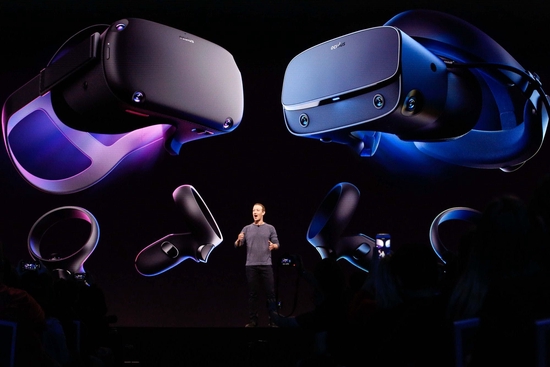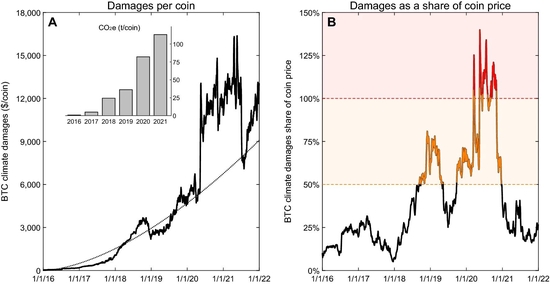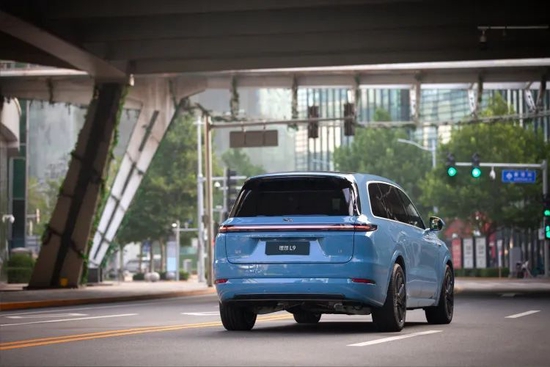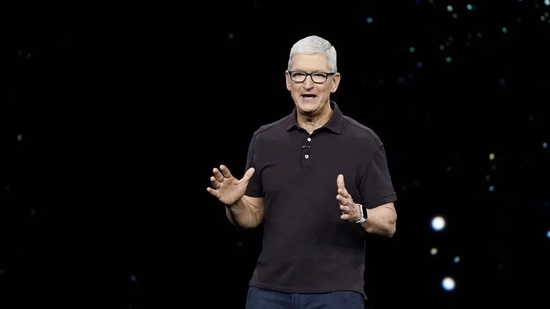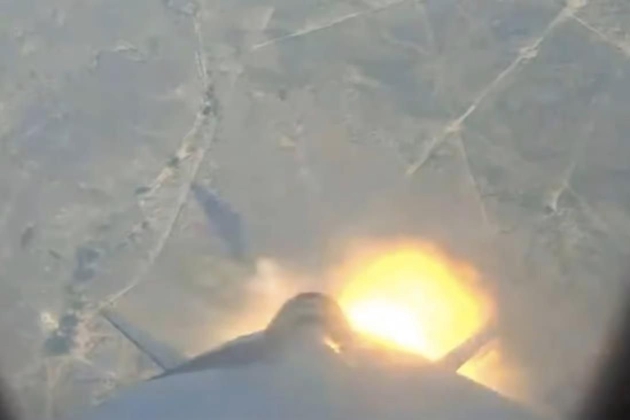your current location is:Home > Finance > depthHomedepth
How much money does the world's number one surgical robot earn in China?
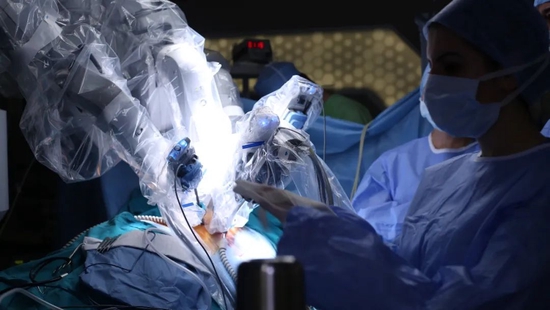 Moore, the founder of Intuitive Surgery, is to the surgical robot industry what Steve Jobs was to the mobile phone industry.
Moore, the founder of Intuitive Surgery, is to the surgical robot industry what Steve Jobs was to the mobile phone industry. Recently, a piece of news about surgical robots has sparked heated discussions. But why is the cost of surgical robots so expensive? How is it developing in China? Very few people have looked closely.
In fact, the surgical robot with the most widespread clinical popularity in China is Da Vinci (foreign company), and one unit is close to 20 million yuan. Therefore, only large hospitals with strong capital, or high-end medical care such as United Family Hospital can introduce a large number of them. In addition, on the patient side, robotic surgery has not been included in medical insurance, and the price is relatively expensive, so the public is still relatively unfamiliar with it.
DaVinci Robot is the flagship product of Intuitive Surgery, a US-listed company. Its founder, Moore, was first inspired by technologies such as field remote surgery experiments and aircraft control. He innovatively combined existing engineering technologies and found it step by step in practice. Da Vinci's business model.
To a certain extent, Moore, the founder of Intuitive Surgery, is to the surgical robot industry what Steve Jobs was to the mobile phone industry.
Since 1995, Moore has successively made three listed surgical robot companies, and finally founded the soft tissue surgery robot Auris. In 2019, Auris was acquired by Johnson & Johnson for $3.4 billion, and Moore became the chief development officer of Johnson & Johnson Medical Devices. Today, J&J is one of the strongest challengers to intuitive surgery.
Specific to products, surgical robots can be roughly divided into three types - endoscopy, orthopedics and vascular intervention. Among them, endoscopic robots are the largest category in the market and can be widely used in surgical operations, including urology, gynecology, thoracic and general surgery. Endoscopic robots account for more than 60% of the overall surgical robot market, and the market size in 2021 is close to US$7 billion, which is also Da Vinci's advantage.
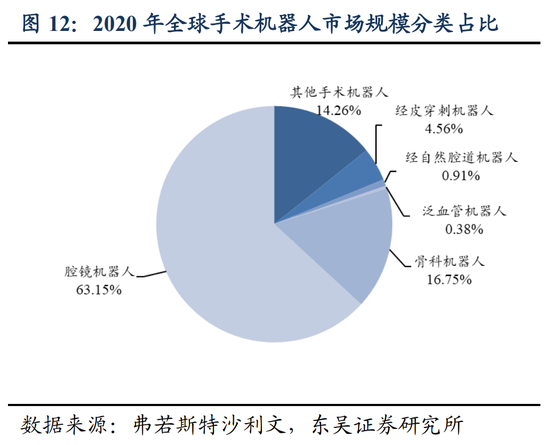
After the Da Vinci surgical robot was officially developed and marketed in 2000, Intuitive Surgery has been leading the market with a 20-year patent protection period under patent barriers and first-mover advantages.
As a result, Intuitive Surgical's revenue and profit performance far outperformed its peers. According to the 2021 annual report, Intuitive Surgical’s revenue reached US$5.710 billion, gross profit reached US$4.443 billion, net profit was US$1.807 billion, and the global market share reached 60%. At present, China has become the second market for Intuitive Surgery.
So, how much money did Da Vinci earn in China? After 16 years in China, has Da Vinci's catfish made a qualitative change in domestic surgical robots? And what about the development of the latecomers?
Sixteen years in China, no rival
In 2007, China's first Da Vinci robot was installed in the People's Liberation Army General Hospital. Academician Gao Changqing organized China's first robotic cardiac surgery team and completed the first robotic minimally invasive cardiac surgery.
The configuration of the top three hospitals and academicians directly set the tone for the subsequent robotic surgery (of course, Da Vinci only covers mid-to-high-end hospitals abroad, and now the management is worrying about whether to sink or not). Surgeons who perform robotic surgery must not only have rich clinical experience, but also receive relevant training from robotics companies to obtain qualifications before they can perform surgery.
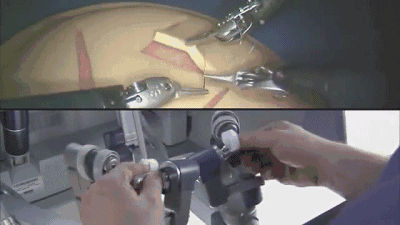 (Da Vinci surgical robot)
(Da Vinci surgical robot)For Da Vinci, the completion of the first operation is only a small step in gradually expanding the Chinese market.
In 2008, the foreign-funded company Chine Mutual formally introduced the DaVinci robot and obtained the registration approval from the State Food and Drug Administration of China. It is worth mentioning that Chinen Mutual is the parent company of United Family Hospital, and United Family is the first foreign-funded hospital to enter China.
The qualitative change in Da Vinci's sales occurred in 2011.
At that time, Fosun Pharma, a domestic listed company, merged with Chinook Mutual Ltd. to merge their respective medical device businesses and set up a joint venture. Fosun Pharma thus obtained the exclusive agency rights of DaVinci Robot in China for eight years (Fosun later transferred the agency rights. Intuitive Fosun, a joint venture established with Intuitive Surgery). In 2014, Fosun Pharma also participated in the full privatization of Chinen Mutual.
Until November last year, Da Vinci was still the only company in China that has obtained the qualification of endoscopic surgical robot. In other words, Fosun Pharma has no rival in the business of acting as a surgical robot. The sales price of Da Vinci in China is twice as high as its average price in the global market, and hospitals have little room for bargaining.
The products sold by Da Vinci in the hospital are mainly two series - Si and Xi, and the corresponding equipment terminal prices are 2.5 million US dollars and 3.6 million US dollars respectively.
But it's not just the one-time income from the equipment that makes Da Vinci so lucrative. As a special surgical instrument, Da Vinci "prescribes" that the robotic arm must be replaced every 10 times, and it will cost about $2,000 to replace one; the maintenance cost of each machine is as high as $80,000 to $170,000 per year.
As early as 2014, the consumables revenue contributed by Da Vinci became the main source of profit for Intuitive Surgery.
However, the biggest obstacle to Da Vinci's development in China is still on both the patient and regulatory sides.
On the patient side, if the cost of consumables is included, the operating costs and startup costs of the da Vinci surgical robot increase by 5-25% compared to the cost of traditional endoscopic surgery. In China, except for small-scale pilots in Shanghai and Zhejiang, robotic surgery has generally not been included in medical insurance, and the price factor has reduced the acceptance of patients.
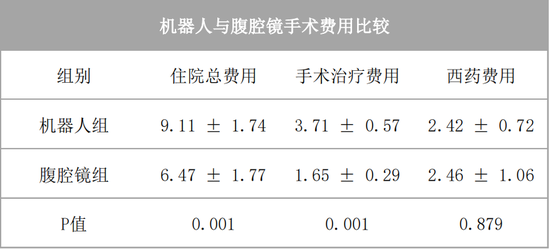 (Comparison of cost of robotic and laparoscopic surgery, unit: RMB 10,000 Source: International Institute of Medical Device Innovation)
(Comparison of cost of robotic and laparoscopic surgery, unit: RMB 10,000 Source: International Institute of Medical Device Innovation)On the regulatory side, before 2018, the Da Vinci surgical robot was a Class A device in China. This means that only qualified hospitals can introduce Da Vinci if both software and hardware are cleared at the same time.
Therefore, for a long period of time, in addition to high-end private hospitals such as United Family, which are fully funded and talented, Da Vinci must obtain quotas from the National Health and Family Planning Commission in order to enter public hospitals with more concentrated resources and higher profits. The logic behind the quotas The medical team and staffing have reached a certain level. The difficulty of selling can be imagined.
The variable occurred in April 2018, when the Da Vinci robot was adjusted from Class A to Class B, and the registration, approval and supervision cycle of surgical robots has been greatly shortened since then.
A closer look at the change curve of the installed capacity of Da Vinci can be found that the obvious increase is after 2018, and the installed capacity for three consecutive years in 2019, 2020 and 2021 has increased by more than 40 units year-on-year, and the annual net profit in 2021. The growth is more than 90 units.
As of the end of last year, the total installed capacity of Da Vinci surgical robots in China exceeded 270, and the equipment sales in the past three years reached 7.5 billion yuan, with a gross profit of more than 60%.
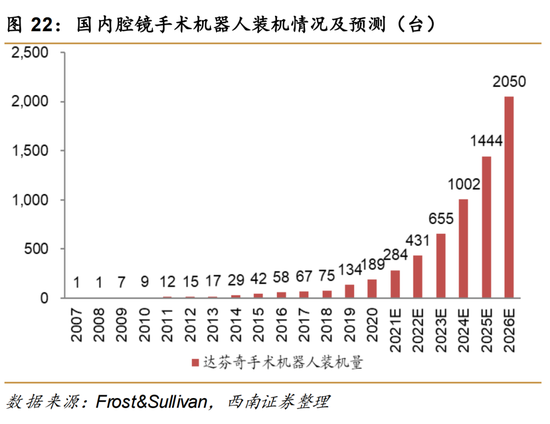 (Installation situation and forecast of Da Vinci surgical robot)
(Installation situation and forecast of Da Vinci surgical robot)It can be seen that although Da Vinci's patents will expire after 2020, Da Vinci's dominance is still difficult to shake due to the surgeon's usage habits and years of technical precipitation.
Hot pursuit of domestic players
Profitable but being "stuck" by foreign giants, this scene has been staged in many fields, and whether domestic substitution can be realized is a common concern of the market.
Like many high-end technologies such as chips, industrial software, and new energy, surgical robots are also inseparable from the laws of industrial development in order to break through domestic substitution.
For a long time, Intuitive Surgical Company has solved only one problem - minimally invasive surgery, and solved it with a star product, and minimally invasive surgery has also been a main line of surgical development in the past few decades.
Most surgical operations are cut and sewed with tools. Before the advent of minimally invasive surgery, surgery was basically tied to bloodshed and death. In the 1960s, open surgery was the only way to deal with abdominal disease, and even if a bean-sized cyst was found in a patient, the abdomen had to be opened before it could be removed.
Until 1980, German Schim invented laparoscopic surgery. Inspired by the commonly used endoscopes in his work, he modified the endoscope to perform the functions of cutting, grasping and burning. As long as a small hole is made in the patient's body, the endoscope can be used to probe into the body and remove it. lesions. Smaller incisions greatly reduce patient pain and healing time.
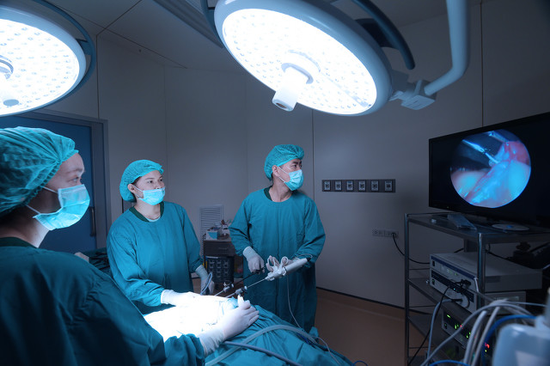 (Source of traditional laparoscopic surgery: IC photo)
(Source of traditional laparoscopic surgery: IC photo)Simm is also known as the father of laparoscopic surgery for this revolutionary approach. Back to the Da Vinci surgical robot, its essence is not a robot but a robotic arm, or more precisely, a more precise laparoscopic surgical tool.
As you can see on the list of large-scale medical equipment configuration plans released by the National Health and Medical Commission, the scientific name of the Da Vinci surgical robot is the endoscopic surgical instrument control system. As the name suggests, da Vinci's role is to extend the surgeon's hands, eyes and brain to help them better perform laparoscopic surgery, rather than completely replace it. The most intuitive advantages of the machine can be divided into three points.
One is to expand the doctor's field of observation. The traditional endoscope probes into the patient's body to form a two-dimensional image, while the Da Vinci can form a 3D stereoscopic image.
Second, the robotic arm is more flexible, which can reduce the doctor's hand tremor. The patient's internal space is quite small, so the surgeon is required to operate more precisely. The Da Vinci robot effectively filters out the shaking of the human hand through an algorithm.
Third, the operation can be performed sitting, which greatly reduces the fatigue of the doctor caused by standing for a long time.
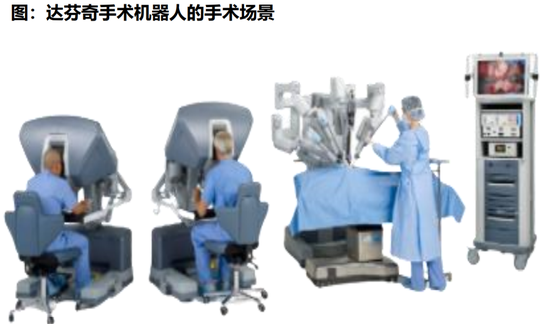 (The surgical scene of the Da Vinci surgical robot)
(The surgical scene of the Da Vinci surgical robot)Therefore, starting from the development of laparoscopic surgery, domestic surgical robots also follow da Vinci from their own advantages.
Since October 2021, three endoscopic robots, Shandong Weigao-Miaoshou S, minimally invasive surgical robot-Tumai, and Suzhou Kangdo Robot, have been approved by NMPA. The strategy of these companies is the "cost-effective" route commonly used by Chinese companies. They develop and design product structures themselves to achieve similar performance while greatly reducing costs. For example, the price of the Miaoshou S is only half of the Da Vinci.
Beijing Shurui Company has taken the route of design differentiation. Different from Da Vinci's porous robot, Shurui has successfully developed a single-hole surgical robot and completed clinical trials. Zhurui integrates endoscopes and surgical tools into a robotic arm, and only needs to make a hole in the patient to complete the operation.
In addition, the surgical robots currently in clinical use have no force feedback function. With strong feedback, doctors can perceive force and motion information, distinguish healthy tissue from diseased tissue, and avoid secondary damage to the suture caused by excessive force. Therefore, solving the lack of force feedback is regarded by Da Vinci "followers" as the key point for the next technological catch-up.
The approval of domestic robots is just the beginning. It took 14 years for Da Vinci to go from laboratory to product and industrialization. The business model of running through the "razor" was only realized after the product was rolled out on a large scale, and the Da Vinci Xi targeted by domestic companies was only the product of the other party eight years ago.
The breakthrough of domestic surgical robots still takes a long time.
Previous:The price of graphics card is difficult to stop falling, and the performance of giants has changed
related articles
Article Comments (0)
- This article has not received comments yet, hurry up and grab the first frame~






